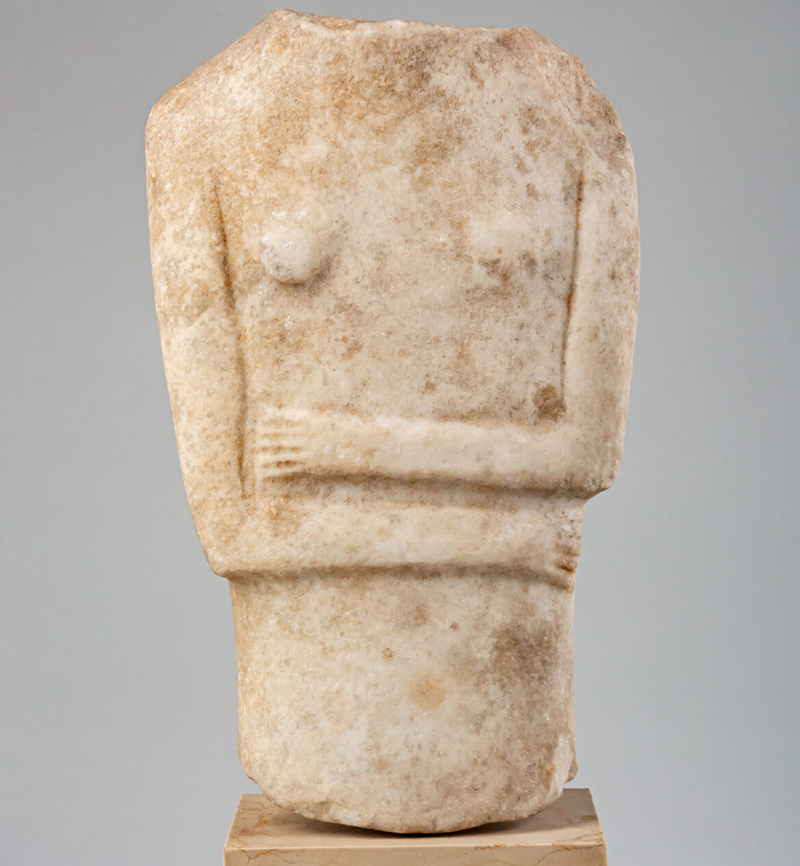Object of the Month: Torso of a Cycladic Figure (Spedos type)
By Bowdoin College Museum of Art
Torso of a Female Idol, 2600 BCE–2500 BCE, marble, by an unknown artist. Bowdoin College Museum of Art. Bequest of Jere Abbott, Class of 1920. 1982.15.4
In the Cyclades islands between the Hellenic culture of mainland Greece and the Minoan culture of Crete, the people of the Cycladic culture (ca. 3200–ca. 1050 BCE) were prolific sculptors, producing thousands of marble figures during the early Bronze Age. This example in the Bowdoin collection is of the Spedos type, one of the most prevalent styles surviving today. The torso, presumably belonging to a full figure originally, depicts two arms folded across the midsection and two stylized breasts. This is typical of the Spedos type, where the figures exclusively depict the female form, employing long, slender proportions. These formal qualities indicate that this sculpture was likely displayed laying on its back and, like most Cycladic sculpture, was intended for a funerary site. Many observers of these statues have assumed that they represent a goddess of fertility or nature, an interpretation common with ancient female figures. However, there is no consensus on this view among archeologists, and there is no direct evidence that they were the focus of ritual worship.
While original use of these figures is unknown, they became significant influences on modern and contemporary sculptors beginning in the early twentieth century. The simple forms and gleaming marble provided a way to abstract the human form. In doing so, the sculptor prioritizes the experience of viewing the object over presenting a naturalistic depiction to the viewer. These principles were appealing to the burgeoning abstract movement, and modern artists like Amedeo Modigliani (1884–1920) and Jean Arp (1886–1966) used these principles to expand the field of modern sculpture. This association between Cycladic figures and modernism has led to increased demand by collectors, and many burial sites have now been plundered in order to find and sell sculptures. Importantly, the collector of this figure, Jere Abbott, Bowdoin Class of 1920, was the first associate director of the Museum of Modern Art in New York City. He focused his collection and teaching on modernism, and likely found this figure to be in conversation with modern artwork.
Brandon Schuster ’23Summer Curatorial Assistant